
Building materials distributor GMS (NYSE:GMS) beat Wall Street’s revenue expectations in Q2 CY2025, but sales fell by 2.4% year on year to $1.41 billion. Its non-GAAP profit of $1.76 per share was 2.1% above analysts’ consensus estimates.
Is now the time to buy GMS? Find out by accessing our full research report, it’s free.
GMS (GMS) Q2 CY2025 Highlights:
- Revenue: $1.41 billion vs analyst estimates of $1.40 billion (2.4% year-on-year decline, 1.2% beat)
- Adjusted EPS: $1.76 vs analyst estimates of $1.72 (2.1% beat)
- Adjusted EBITDA: $135.5 million vs analyst estimates of $134.2 million (9.6% margin, 0.9% beat)
- Operating Margin: 5.7%, down from 6.8% in the same quarter last year
- Free Cash Flow was -$39.39 million compared to -$31.92 million in the same quarter last year
- Organic Revenue fell 4.9% year on year
- Market Capitalization: $4.18 billion
Company Overview
Founded in 1971, GMS (NYSE:GMS) distributes specialty building materials including wallboard, ceilings, and insulation products, to the construction industry.
Revenue Growth
A company’s long-term sales performance can indicate its overall quality. Any business can put up a good quarter or two, but many enduring ones grow for years. Over the last five years, GMS grew its sales at an impressive 11.4% compounded annual growth rate. Its growth beat the average industrials company and shows its offerings resonate with customers.
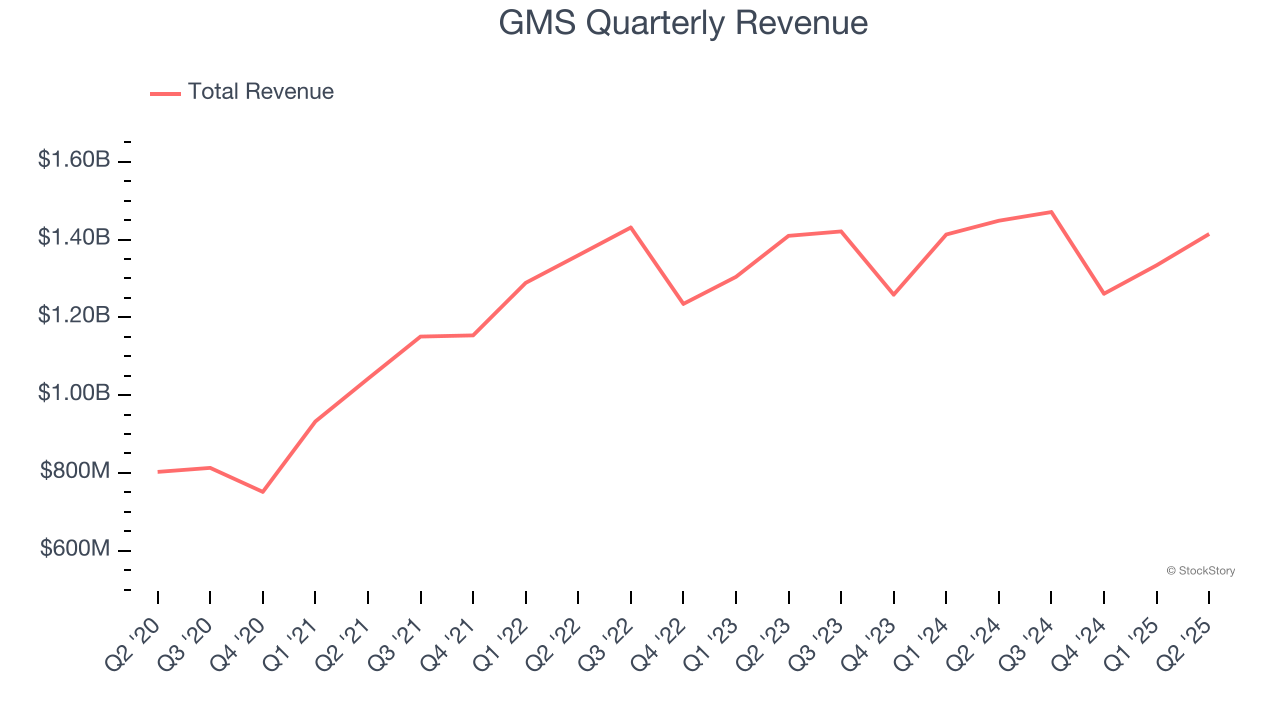
Long-term growth is the most important, but within industrials, a half-decade historical view may miss new industry trends or demand cycles. GMS’s recent performance shows its demand has slowed significantly as its revenue was flat over the last two years. 
GMS also reports organic revenue, which strips out one-time events like acquisitions and currency fluctuations that don’t accurately reflect its fundamentals. Over the last two years, GMS’s organic revenue averaged 3.5% year-on-year declines. Because this number is lower than its two-year revenue growth, we can see that some mixture of acquisitions and foreign exchange rates boosted its headline results. 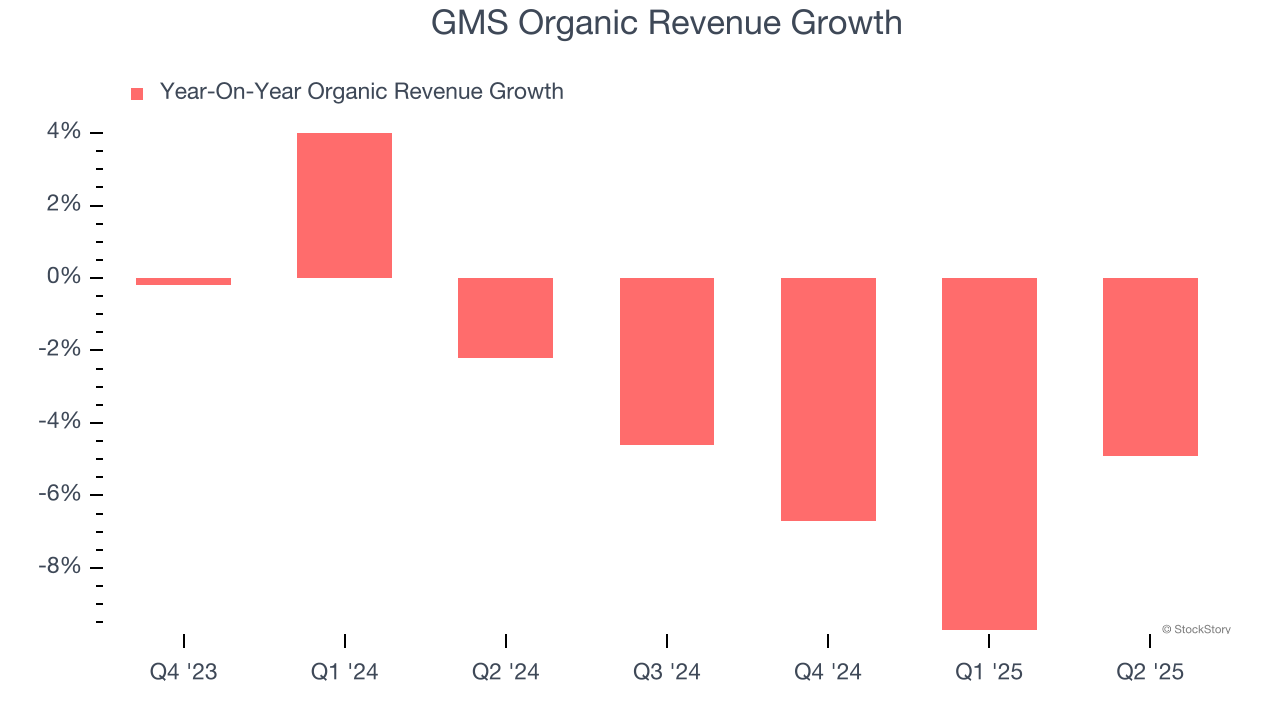
This quarter, GMS’s revenue fell by 2.4% year on year to $1.41 billion but beat Wall Street’s estimates by 1.2%.
Looking ahead, sell-side analysts expect revenue to grow 1% over the next 12 months, similar to its two-year rate. This projection doesn't excite us and suggests its newer products and services will not accelerate its top-line performance yet.
Software is eating the world and there is virtually no industry left that has been untouched by it. That drives increasing demand for tools helping software developers do their jobs, whether it be monitoring critical cloud infrastructure, integrating audio and video functionality, or ensuring smooth content streaming. Click here to access a free report on our 3 favorite stocks to play this generational megatrend.
Operating Margin
Operating margin is one of the best measures of profitability because it tells us how much money a company takes home after procuring and manufacturing its products, marketing and selling those products, and most importantly, keeping them relevant through research and development.
GMS was profitable over the last five years but held back by its large cost base. Its average operating margin of 7.4% was weak for an industrials business.
Looking at the trend in its profitability, GMS’s operating margin decreased by 2.2 percentage points over the last five years. This raises questions about the company’s expense base because its revenue growth should have given it leverage on its fixed costs, resulting in better economies of scale and profitability. GMS’s performance was poor no matter how you look at it - it shows that costs were rising and it couldn’t pass them onto its customers.
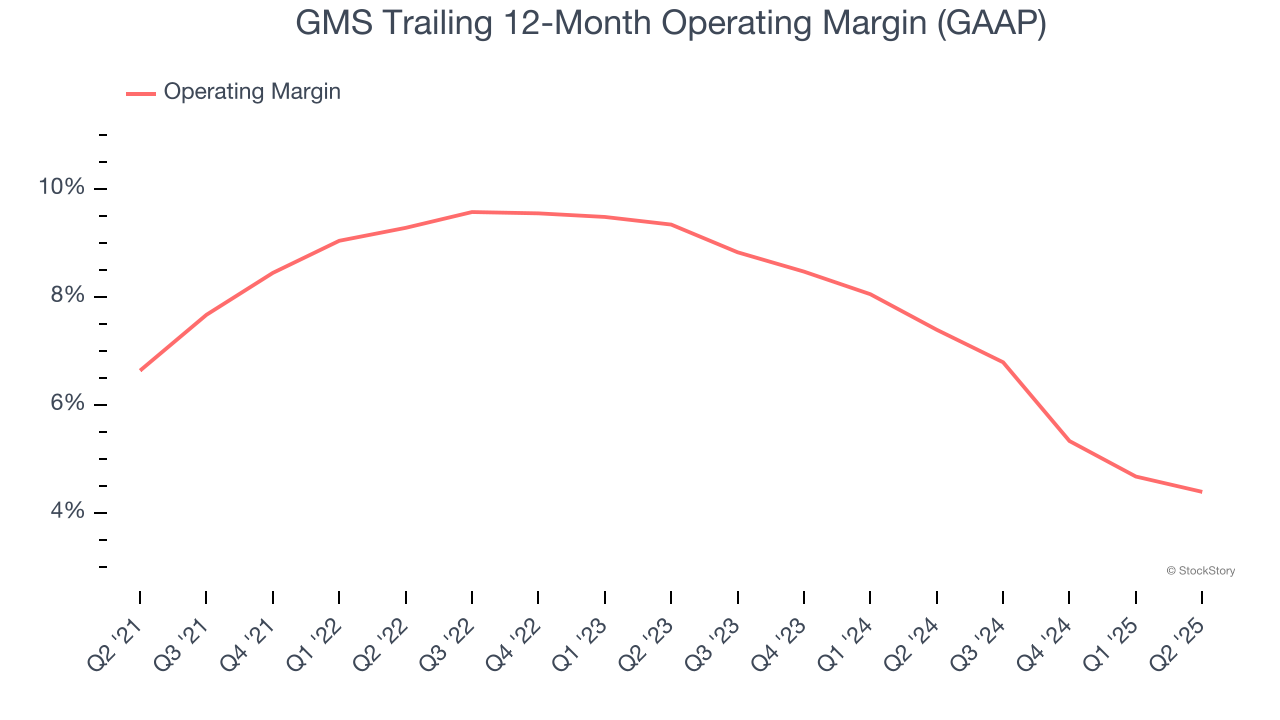
In Q2, GMS generated an operating margin profit margin of 5.7%, down 1 percentage points year on year. Since GMS’s operating margin decreased more than its gross margin, we can assume it was less efficient because expenses such as marketing, R&D, and administrative overhead increased.
Earnings Per Share
We track the long-term change in earnings per share (EPS) for the same reason as long-term revenue growth. Compared to revenue, however, EPS highlights whether a company’s growth is profitable.
GMS’s EPS grew at a spectacular 14.7% compounded annual growth rate over the last five years, higher than its 11.4% annualized revenue growth. However, this alone doesn’t tell us much about its business quality because its operating margin didn’t improve.
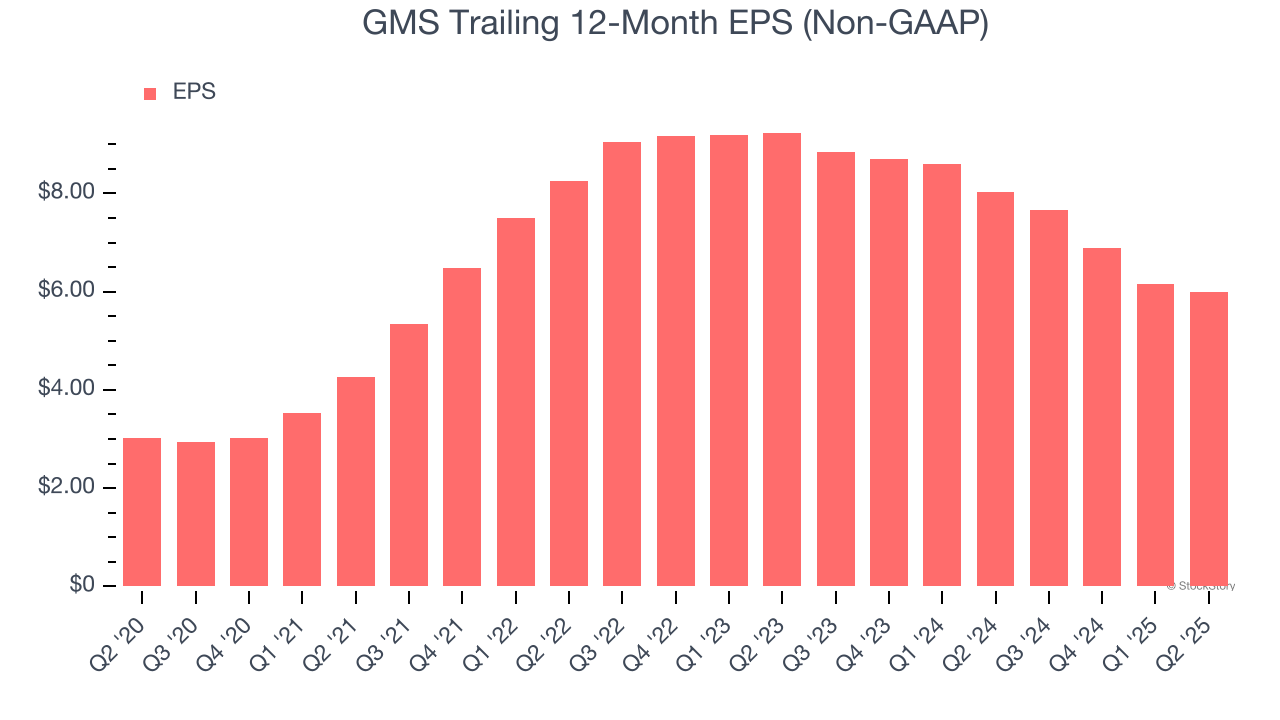
We can take a deeper look into GMS’s earnings quality to better understand the drivers of its performance. A five-year view shows that GMS has repurchased its stock, shrinking its share count by 10.2%. This tells us its EPS outperformed its revenue not because of increased operational efficiency but financial engineering, as buybacks boost per share earnings. 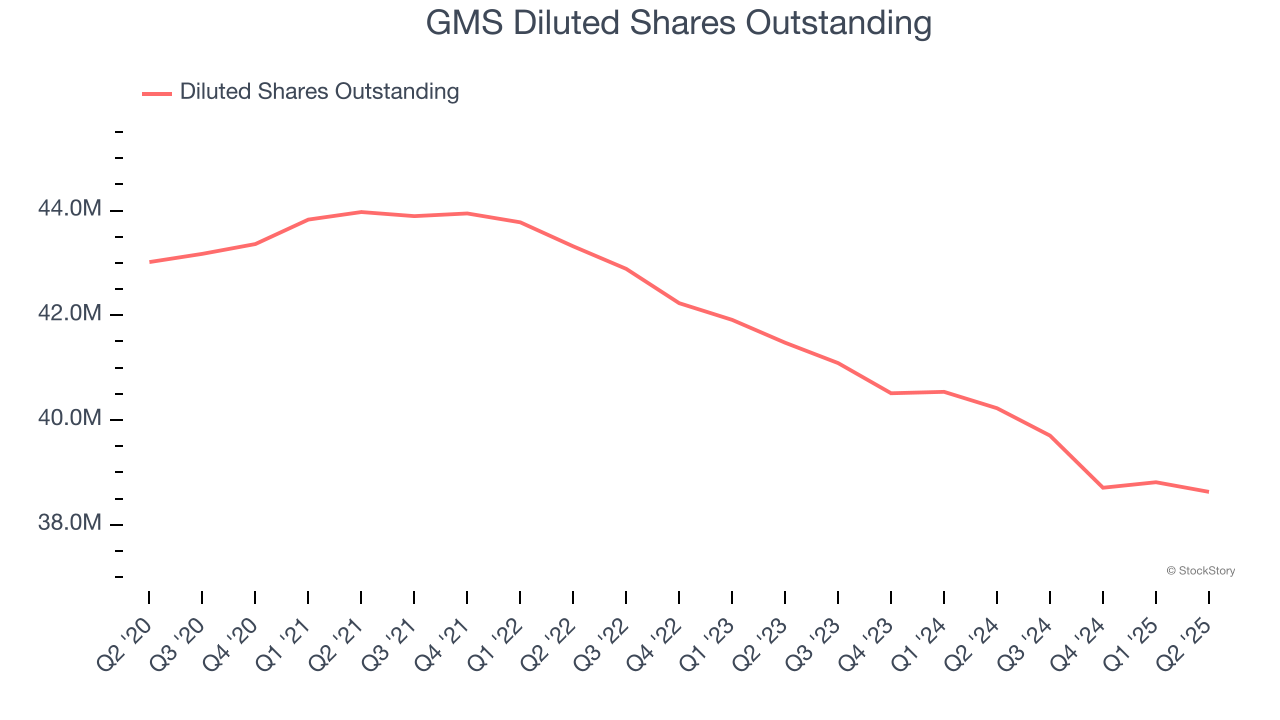
Like with revenue, we analyze EPS over a more recent period because it can provide insight into an emerging theme or development for the business.
For GMS, its two-year annual EPS declines of 19.5% mark a reversal from its (seemingly) healthy five-year trend. We hope GMS can return to earnings growth in the future.
In Q2, GMS reported adjusted EPS of $1.76, down from $1.93 in the same quarter last year. Despite falling year on year, this print beat analysts’ estimates by 2.1%. Over the next 12 months, Wall Street expects GMS’s full-year EPS of $5.99 to grow 8.9%.
Key Takeaways from GMS’s Q2 Results
It was good to see GMS narrowly top analysts’ revenue expectations this quarter. We were also happy its EBITDA narrowly outperformed Wall Street’s estimates. Overall, this print had some key positives. The stock remained flat at $109.83 immediately following the results.
Should you buy the stock or not? When making that decision, it’s important to consider its valuation, business qualities, as well as what has happened in the latest quarter. We cover that in our actionable full research report which you can read here, it’s free.
